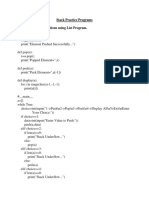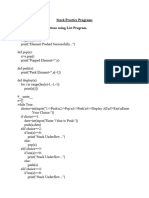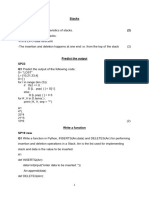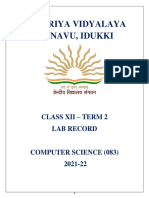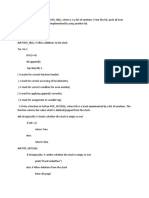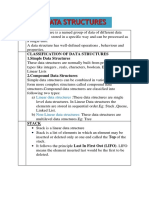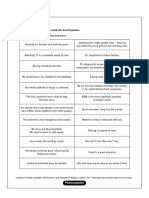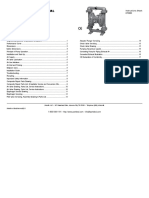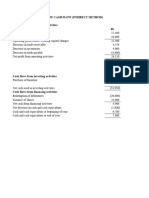0% found this document useful (0 votes)
81 views2 pagesStacks Notes With Programs
This document discusses stacks as a data structure and provides examples of push and pop operations on a stack. It defines a stack as a data structure that follows the LIFO (last-in, first-out) principle for inserting and deleting data. Example applications of stacks include reversal of sequences, backtracking puzzles, and undo mechanisms. It also defines stack overflow and underflow errors. Three questions are provided as examples of using push and pop operations on stacks to add and remove names and even numbers.
Uploaded by
Kartik DubeyCopyright
© © All Rights Reserved
We take content rights seriously. If you suspect this is your content, claim it here.
Available Formats
Download as PDF, TXT or read online on Scribd
0% found this document useful (0 votes)
81 views2 pagesStacks Notes With Programs
This document discusses stacks as a data structure and provides examples of push and pop operations on a stack. It defines a stack as a data structure that follows the LIFO (last-in, first-out) principle for inserting and deleting data. Example applications of stacks include reversal of sequences, backtracking puzzles, and undo mechanisms. It also defines stack overflow and underflow errors. Three questions are provided as examples of using push and pop operations on stacks to add and remove names and even numbers.
Uploaded by
Kartik DubeyCopyright
© © All Rights Reserved
We take content rights seriously. If you suspect this is your content, claim it here.
Available Formats
Download as PDF, TXT or read online on Scribd
/ 2






